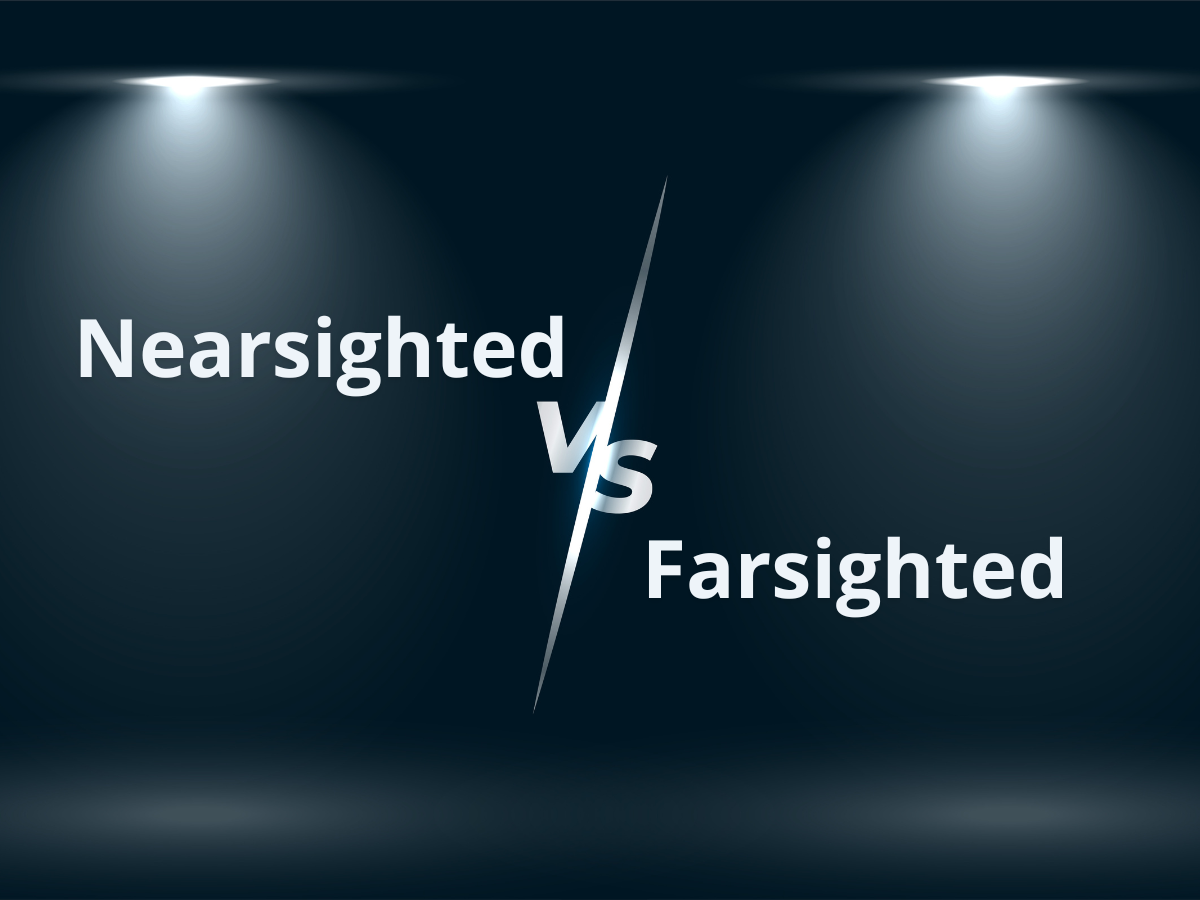Nearsightedness vs Farsightedness: Uncovering the Disparities
The Vision Contrasts: A Profound Divide
While nearsightedness and farsightedness may seem like opposing conditions, they stem from a shared root – an irregularity in the eye’s ability to focus light on the retina. However, the underlying causes and manifestations of these two refractive errors diverge, creating distinct visual experiences.
Nearsightedness: A Blurred Distant Reality
Nearsightedness, or myopia, is a condition where distant objects appear blurred, while near vision remains clear. This occurs when the eyeball is elongated or the cornea (the transparent front part of the eye) is too curved, causing light to converge before reaching the retina, the light-sensitive tissue at the back of the eye.
Farsightedness: A Hazy Intimacy
Conversely, farsightedness, known as hyperopia, results in near objects appearing blurred, while distant vision remains relatively sharp. This refractive error arises when the eyeball is too short or the cornea is too flat, preventing light from converging precisely on the retina for near objects.
The Root Causes: Genetic and Environmental Interplay
Nearsightedness: A Multifaceted Enigma
Nearsightedness is often a complex interplay of genetic and environmental factors. While genetics play a significant role, with children of nearsighted parents having a higher risk, environmental factors like prolonged near work, lack of outdoor time, and a sedentary lifestyle can exacerbate the condition.
Farsightedness: A Hereditary Inheritance
Unlike nearsightedness, farsightedness is primarily attributed to genetics. Children born to farsighted parents have a higher likelihood of inheriting this refractive error. However, the degree of farsightedness may vary, and environmental factors can influence its progression.
Treating the Vision Divide: Restoring Clarity
Nearsightedness: Optical Interventions
To correct nearsightedness, various optical solutions are available:
- Eyeglasses or Contact Lenses: These devices refract light before it enters the eye, allowing it to focus correctly on the retina, restoring clear distance vision.
- Refractive Surgery: Procedures like LASIK and PRK reshape the cornea, permanently correcting the refractive error and reducing or eliminating the need for glasses or contacts.
Farsightedness: Accommodating Solutions
Addressing farsightedness often involves:
- Eyeglasses or Contact Lenses: Similar to nearsightedness, these optical aids bend light appropriately, enabling clear near vision.
- Refractive Surgery: Laser procedures like LASIK or PRK can reshape the cornea, alleviating farsightedness and improving near vision.
- Reading Glasses: For mild cases, over-the-counter reading glasses can provide temporary relief for near work.
The Lifelong Journey: Monitoring and Adapting
Both nearsightedness and farsightedness can progress over time, necessitating regular eye examinations and adjustments to prescriptions or treatment plans. Early detection and management are crucial for maintaining optimal vision and preventing potential complications.
By understanding the fundamental differences between these two refractive errors, individuals can better comprehend their visual experiences and make informed decisions about appropriate corrective measures, ensuring a lifetime of clear and comfortable vision.
Source:
Nearsightedness (Myopia) | National Eye Institute. (2023, July 25). https://www.nei.nih.gov/learn-about-eye-health/eye-conditions-and-diseases/nearsightedness-myopia
Farsightedness (Hyperopia) | National Eye Institute. (2016, January 26). https://www.nei.nih.gov/learn-about-eye-health/eye-conditions-and-diseases/farsightedness-hyperopia
Categories




